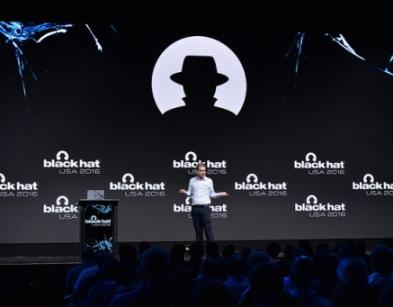Security expert warns the Internet could be lost to regulators and hackers if industry doesn't start locking down security.
August 3, 2016

BLACK HAT USA—Las Vegas—Security guru Dan Kaminsky is calling for the security industry to embrace the “isolation” architecture of virtual machine and cloud technology as a way to protect online data and end users. Kaminsky, who delivered the keynote address here and detailed his prototype IronFrame browser and a new firewalling technology Autoclave, says the security industry has an opportunity to better secure the Internet.
“We have a seat at the table now, one of the first-class engineering requirements” on the Internet, Kaminsky said in an interview here this week. “We are at a moment where so many things are getting hacked and where there is this drive to do something about security. And it is astonishing to see how the government is incredibly focused on the debate about encryption. It’s sucking the oxygen away from the question of 'What do we have to do to make security actually a thing people deploy?' I want to make it easy... [and] make it integrate.”
“We have to do something or we will lose" the internet to regulators and hackers, said Kaminsky, who is chief scientist and co-founder of WhiteOps. His keynote, “The Hidden Architecture of our Time: Why This Internet Worked, How We Could Lose It, and the Role Hackers Play,” was a call to arms for the security industry to step and fix the Net’s security woes.
Kaminsky’s prototype solution basically reduces the attack surface of a browser session by hosting the browser in a virtualized environment that then firewalls off access to potentially dangerous functions. “Give Chrome its own kernel, and give the application what it wants, which is a full kernel with all sys calls and then firewall that,” he said.
He’s been working over the past year on IronFrame, a prototype browser that kills clickjacking, so when a user clicks on a compromised ad or other content on a website, he or she isn’t redirected to malicious websites. Clickjacking is where concealed and malicious content and links on a website are layered atop legitimate ones, unbeknownst to the user and the website operator.
IronFrame roperates like a Jenga building-block model, moving the bottom layer of graphics content to the top layer so the browser doesn't even see the phony and malicious layer. It’s a way to end clickjacking "by design," Kaminsky said when he first revealed the browser a year ago.
Now Kaminsky has used Autoclave to sandbox powerful functions in online applications that attackers can exploit, leaving the bad guys with only a handful of benign sys calls. “This is for anyone who wants to know how to securely host content” online, he said. “We have to stop providing services [in applications] to the bad guys … You can lock it down so the attacker can’t do anything dangerous,” he said.
“We can do more than blow things up, we as hackers and our government,” he said.
More Black Hat 2016 Content:
Read more about:
Black Hat NewsAbout the Author(s)
You May Also Like
The fuel in the new AI race: Data
April 23, 2024Securing Code in the Age of AI
April 24, 2024Beyond Spam Filters and Firewalls: Preventing Business Email Compromises in the Modern Enterprise
April 30, 2024Key Findings from the State of AppSec Report 2024
May 7, 2024Is AI Identifying Threats to Your Network?
May 14, 2024
Black Hat USA - August 3-8 - Learn More
August 3, 2024Cybersecurity's Hottest New Technologies: What You Need To Know
March 21, 2024


